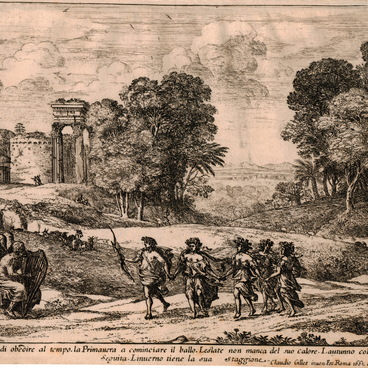Karl Gottlieb Guttenberg made the Wilhelm Tell engraving on the basis of the original picture by Johann Heinrich Fussley, a Swiss and English painter, graphic artist and historian. The work is based on an episode from the life of the national hero of Switzerland, peasant Wilhelm Tell.
In the late 13th century, the Swiss forest cantons of Uri, Schwyz and Unterwalden were relatively independent. In 1291, Emperor Albrecht I came to power and put an end to their freedom having appointed a governor, the cruel Hermann Gessler. A riot was brewing.
The governor decided to establish his authority and at the same time, to see who openly hated the Austrians. He hung the hat of the Austrian duke in the main town square of Altdorf and ordered everyone who passed by to bow to it. Peasant Wilhelm Tell did not obey the order. Gessler wanted to make fun of him and ordered him to knock an apple off his son’s head with an arrow. Taking two arrows, Tell stepped back 20 steps, pulled the bowstring and hit the apple. When Tell was asked why he needed another arrow, he said that if one hit his son, the other would pierce Gessler’s heart. The enraged governor ordered Tell to be sent to the prison of Altdorf Castle.
In the late 13th century, the Swiss forest cantons of Uri, Schwyz and Unterwalden were relatively independent. In 1291, Emperor Albrecht I came to power and put an end to their freedom having appointed a governor, the cruel Hermann Gessler. A riot was brewing.
The governor decided to establish his authority and at the same time, to see who openly hated the Austrians. He hung the hat of the Austrian duke in the main town square of Altdorf and ordered everyone who passed by to bow to it. Peasant Wilhelm Tell did not obey the order. Gessler wanted to make fun of him and ordered him to knock an apple off his son’s head with an arrow. Taking two arrows, Tell stepped back 20 steps, pulled the bowstring and hit the apple. When Tell was asked why he needed another arrow, he said that if one hit his son, the other would pierce Gessler’s heart. The enraged governor ordered Tell to be sent to the prison of Altdorf Castle.



